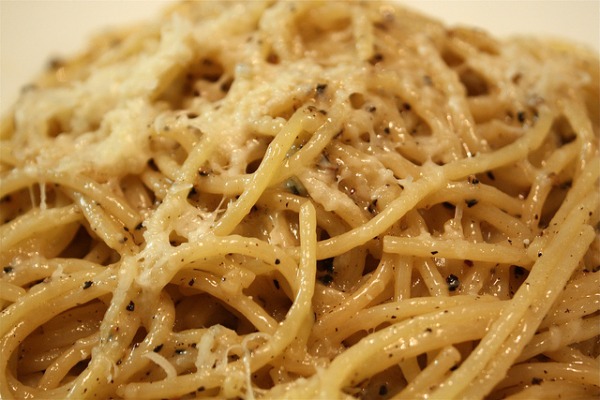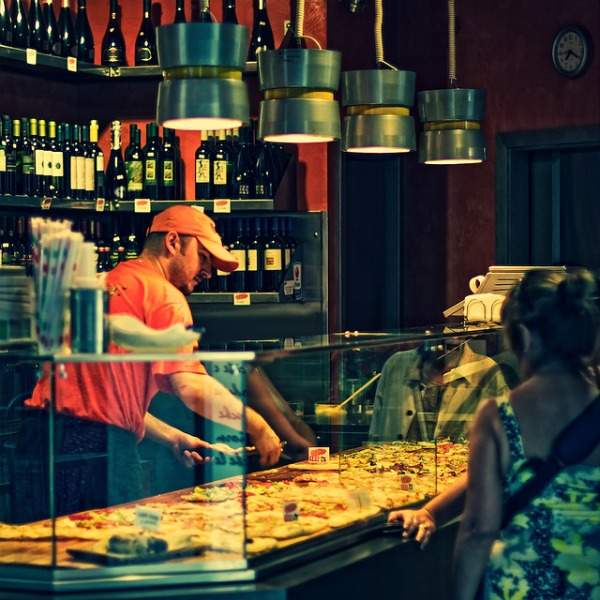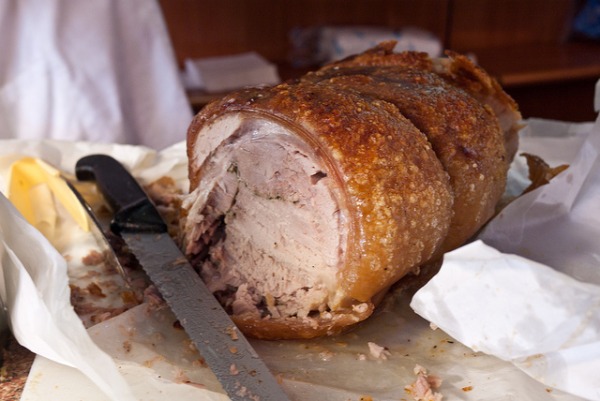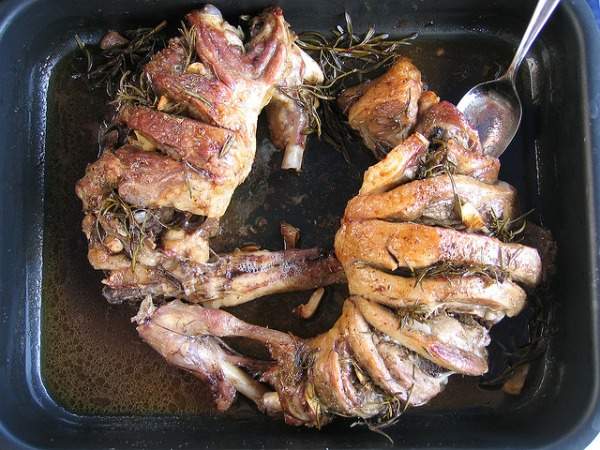Eating well in Rome shouldn’t be very hard, since the entire country of Italy delights the palate with dish after dish of local goodness. But because Rome is such a popular tourist city, you might find it more difficult than it should be to find places serving traditional Roman cuisine – and, more to the point, doing it well.
To help make sure you find the good local eats in Rome, it’s important to know what you’re looking for. Yes, you’ll find just about every stereotypically Italian food served somewhere in the capital city, but here are the dishes that are traditionally Roman. Look for these items (and stay away from menus translated into umpteen gazillion languages) and you’re well on your way to eating your way through the best of Rome.
Planning a RTW trip? Why should you add Rome to your round the world trip itinerary?
Artichokes

Rome, like most of Italy, loves its seasonal produce – and no vegetable is more beloved in Rome than the artichoke. You’ll find it served two ways, for the most part, and what’s on the menu depends a bit on where you are in the city.
Carciofi alla romana, or Roman-style artichokes, are found all over the city when artichokes are fresh in the spring. They’re stuffed with mint, garlic, and parsley and cooked slowly in olive oil. In the old Jewish ghetto of Rome, you’ll instead see carciofi alla giudia – Jewish-style artichokes – on menus. These are deep-fried whole artichokes, and the finished product looks like a flower. A crispy flower, yes, but a flower all the same.
Pasta

Pasta is so popular in Rome that you can eat your way through a week’s stay there having something new every night without deviating from the pasta menu. There are a few pasta dishes that are particularly well-known in Rome, however, and that the pasta-loving traveler should seek out.
Perhaps the most famous is spaghetti alla carbonara, and although its origins are unclear it appears to have been born during World War II when Italians began eating the bacon and eggs the U.S. Army troops were eating – they just turned those ingredients into something more Italian. Carbonara is a combination of egg yolks, aged cheese, and guanciale (fatty pork) mixed with long pasta. The egg yolks tend not to be cooked (other than being heated by the pasta), and the dish is topped with black pepper.
Two popular tomato-based pasta sauces are all’amatriciana and all’arrabbiata. The former is rich, made with guanciale and pecorino, and typically served with bucatini, which is like spaghetti only thicker and hollow. The latter is a spicy affair, made with red chili and garlic, and often served with penne.
A personal favorite among the Roman pasta dishes is one that’s been described to me as “Roman comfort food.” It’s called cacio e pepe, and it’s pecorino cheese and lots of black pepper mixed with spaghetti. The mixing is done when the pasta is at its hottest, and with some of the reserved pasta water, so the end result is creamy, peppery, cheesy goodness.
You may be wondering why I didn’t mention the supposedly-famous Roman invention of “fettucine alfredo.” This is because “fettucine alfredo” is an American name for the plain pasta Italians eat when they have an upset stomach (sort of their version of Saltines) – hardly something you’d expect to find on a restaurant menu. Still, you can find the supposedly “original” restaurant where two Hollywood stars first had this pasta in Rome (the “originale Alfredo” sign in the window is hard to miss). Just don’t go home thinking you’ve had some kind of traditional Roman dish.
Pizza

The foodies among you might be readying your pitchforks against me right now, interjecting with, “Hey, pizza comes from Naples, not Rome!” And you’re absolutely right. But Romans do their own thing with pizza, and there’s no reason you can’t eat (and love) both styles.
While traditional Neapolitan pizza is round with a very thin crust, each pie being a single serving, a typical Roman pizza is called pizza al taglio, or pizza by the slice. It’s made on a slightly thicker crust, more akin to a focaccia, and you’ll see it on display in big trays in pizza places around the city. You indicate how big of a piece you want, they cut it for you and pop it in the oven to heat it up, and then you pay by how much your piece weighs. This is usually street food in Rome, so snack-size portions are what you see most, but there’s no reason you can’t get a bigger cut and call it a meal – or go back for seconds.
A particularly popular pizza al taglio in Rome is pizza bianca, which is essentially a focaccia-like flat bread often topped with just olive oil, salt, and maybe some herbs. Look for the word forno, which means oven, on the outside of restaurants as that’s a good indication you’ll find Roman pizza on offer inside.
Pecorino Romano

You’ve seen pecorino listed in several of the dishes above, so it won’t surprise you that this aged cheese gets its very own entry. This is cheese that’s been produced around Rome for more than 2000 years.
You may be familiar with pecorino, but perhaps you didn’t realize that its full name is pecorino romano. Pecorino romano is a common ingredient in many pasta dishes in Rome, especially since Roman cuisine tends to be heartily flavored and pecorino is strong and salty. This hard, sheep’s milk cheese hails from the region around Rome, and although it can be confused with the more famous parmigiano reggiano (another hard, aged cheese) pecorino has its own special flavor.
Pork

Along with pecorino, you probably noticed all the guanciale in the pasta dishes listed above. That’s just one example of how prominently pork features in the Roman diet.
Guanciale is the cheek of the pig, and its fatty qualities make it a great addition to Roman sauces (cooked first, the fat and flavor permeate the whole dish). You’ll find pork on appetizer plates as well, in cured and salted forms. But the showstopper is really the porchetta.
Porchetta is roasted pig, simply flavored and very juicy, and it can be served as the main dish at a sit-down dinner. If you’re not being invited into Roman homes for meals, however, you can still sample porchetta – it’s often the meat component in sandwiches sold at streetside food carts.
Lamb

Carnivores may think of pork first when they think of Italy, but in Rome lamb is just as popular. One of the most common spring dishes (particularly popular at Easter) is abbacchio, which is a very young roasted lamb.
What makes Roman abbacchio so special is that in order to be considered (and sold as) abbacchio rather than simply roast lamb, the animal must be killed before it has started eating grass – it has to be exclusively milk-fed.
Offal

For the more adventurous eater, Rome has a couple things you might find appealing. Much of Rome’s cuisine is largely based on the so-called cucina povera – peasant food – which often means including the least-expensive bits of the animal.
One common dish is trippa alla romana, or Roman-style tripe (cow’s stomach). This is a dish where tripe is cut into long strips and cooked in a tomato sauce, covered with pecorino cheese at the end. Another dish involving offal is rigatoni con la pajata, where calf intestines – the pajata – form a thick, creamy sauce for the pasta when they’re cooked. Why? Because the intestines retain a form of cow’s milk in the lining that melts when they’re heated. (Hey, you asked.)
Granita and Grattachecca

Let’s finish off with some dessert, shall we?
Summer in Rome is an ideal time to sample two of Rome’s favorite sweet treats – and I’m not talking about gelato. Sure, you can eat your way across Rome just at the city’s many excellent gelaterie, but seek these two other frozen delights out for something a little more special.
Granita isn’t unique to Rome (in fact it’s Sicilian), but Romans do a particular granita that’s worth writing home about. This isn’t the sort of shaved ice thing you got at the county fair, drizzled with brightly colored corn syrup – granita is an icy version of whatever flavor you’re ordering, full of flavor and incredibly refreshing. In Rome, the granita of choice is granita al caffè, a strong coffee ice that’s usually covered with a generous dollop of whipped cream.
Another refresher on a hot day in Rome is grattachecca, which also involves ice shavings. Grattachecca is generally a cup full of ice shavings mixed with pieces of fresh fruit with fruit juice poured over the top. It requires a spoon and a straw, and is often sold from streetside stands that pop up in the summer. You’ll be able to spot them from afar because they usually have copious amounts of fruit on display.
Hungry for more? Plan your trip to Italy on our Italy travel guide, look for airfare to Rome, find out where to stay in Rome, and learn seven things you should know about Rome. And find out how to eat and drink your way around other destinations.
>> One of my go-to girls on all things Roman cuisine is Katie Parla, whose blog features enough posts in the “Rome & Lazio” archives to keep you salivating for hours.
photos, top to bottom, by: cameronparkins, naotakem, The Wolf, Lec, sporkist, masolino, Warburg, bloggyboulga